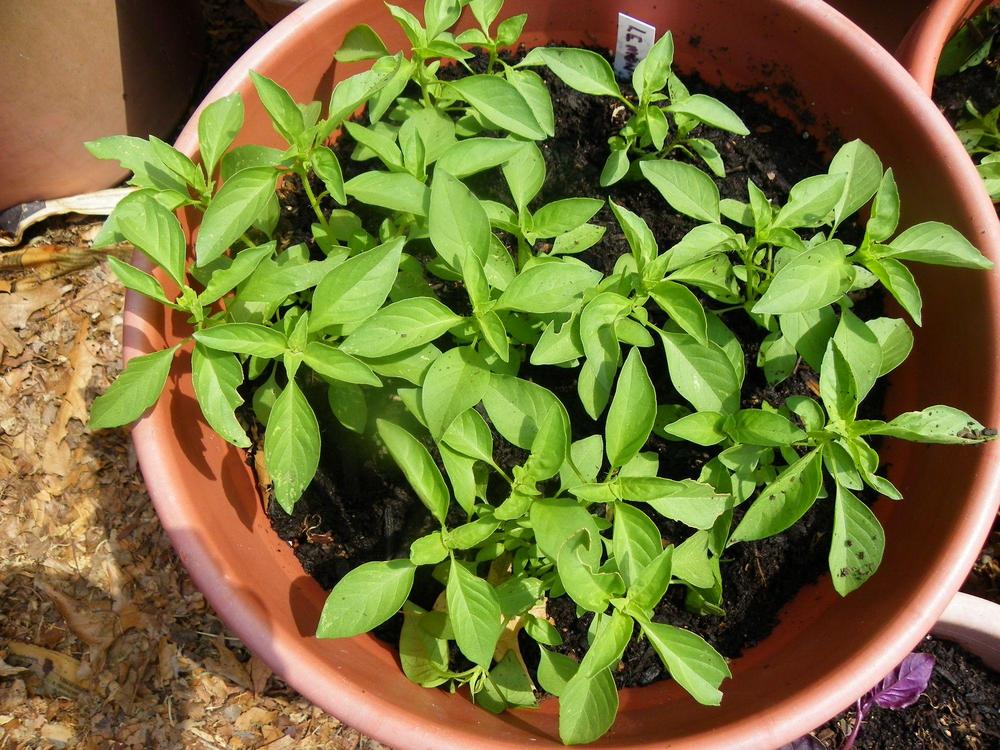As with vegetables fresh from the garden, it's hard to beat homegrown herbs for your culinary delight. However, for most of us winter cold puts an end to the outdoor harvest season. Fortunately, if you've got a sunny window it's not hard to grow your own fresh herbs indoors in winter. You won't be harvesting on the same scale as you might from an outdoor garden, but it's still delightful to be able to pick a few sprigs of fresh herbs to liven up your dishes this winter.
To grow your own herbs indoors, in addition to plants you'll need space, growing media, containers, fertilizer, water, and light -- lots of light. Light is probably the most limiting factor for indoor herb growing, especially during the short, dark days of winter. For the best light place your herbs in windows facing south or southwest. East or west facing windows may provide enough light for some herbs. If you don't have enough sunny windowsill space, consider providing extra light to your herbs with fluorescent grow lights.
How much space will you need? With regular harvesting, you can get by with an area eight to twelve inches each way for a single plant. The more space you have, the more or larger plants you can grow. If you have very limited space, choose the one or two herbs you will use most often.

Containers You can use just about any container you'd like as long as it has drainage holes. Bigger is better than too small for good growth. Clay pots are suitable, but plants growing in them will need more frequent watering than those grown in plastic pots. It is most important that the container has proper drainage. Excess water needs to drain away from the roots. Because water is going to come out through the drainage holes, you'll need some type of saucer to catch that excess water. Keep in mind that clay saucers let moisture escape so another waterproof barrier should be placed under them to protect the surface they're sitting on.
Water How frequently you'll need to water will depend on several factors. Your herb plants water needs will vary depending on temperature, amount of light available, and how actively plants are growing. Make sure you're watering only when the plants need it, not on a fixed schedule. Allow the top inch or two of soil to dry out between waterings. To decide if it's time to water you can use the finger method, poking into the soil up to your second knuckle to see if the soil is still moist. You can also use the weight test by lifting the pot. As you do this before and after watering, you'll learn how light the pot should feel when it is ready for watering.
Light While most culinary herbs need at least five to six hours of light (more is better, especially in winter), mint, parsley, and chives can get along with four or five hours. Plants should be close to windows but not touching. If the window is too cold, move plants a little further away. If you are growing your herbs under fluorescent lights, keep lights on 14 hours a day, with bulbs hung 6-8 inches above the tops of the plants.
Temperature Most herbs prefer daytime temperatures of 65 to 70 degrees F. with nighttime temperatures at least 10 degrees lower. Rosemary will do best indoors over the winter in a cooler spot (60-65 degree days would be ideal) that also gets plenty of direct sun.
Some of the herbs that do best indoors include chives, mint, parsley, Vietnamese coriander, oregano (the Greek variety is easiest), thyme, rosemary, dwarf sage, and dill. Basil is a little harder to grow, but is one of my favorites for flavoring. You will have better results with basil if it is kept away from cold windows, but in a location with plenty of sun. It likes day and night temperatures in the 70s.
One advantage of growing mint indoors is that you don't have to worry about it getting out of control and taking over the garden. Peppermint will provide more flavor per leaf than spearmint. Peppermint also requires less light than spearmint. If you have room there are numerous mint varieties from which to choose.
Enjoy your fresh herbs in your favorite dishes, teas, and other drinks.
Steve Trusty has a degree in horticulture from Iowa State University. He has been helping gardeners receive more enjoyment from their lawns and gardens for years through radio, TV, books, magazines and websites.
 Victory Seed Company has all the seeds you want for your best garden in 2024.
Victory Seed Company has all the seeds you want for your best garden in 2024.
For 25 years, the family-owned Victory Seed Company has provided the highest quality vegetable, herb and flower seeds to families across the country. We are passionate about providing you the best seeds available that give excellent germination, robust plants, and the harvest you want. With a catalog of over a thousand varieties, we have everything, and our prices are the kinds that we'd want to pay. We have hundreds of yesterday's heirloom vegetables, as well as today's award winning hybrid selections. Get to know us by visiting our website and browsing through our online vegetable seed catalog.